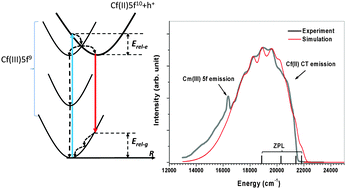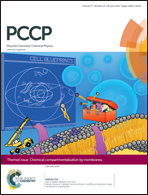Metastable charge-transfer state of californium(iii) compounds
Abstract
Among a series of anomalous physical and chemical properties of Cf(III) compounds revealed by recent investigations, the present work addresses the characteristics of the optical spectra of An(HDPA)3·H2O (An = Am, Cm, and Cf), especially the broadband photoluminescence from Cf(HDPA)3·H2O induced by ligand-to-metal charge transfer (CT). As a result of strong ion–ligand interactions and the relative ease of reducing Cf(III) to Cf(II), a CT transition occurs at low energy (<3 eV) via the formation of a metastable Cf(II) state. It is shown that the systematic trend in CT transitions of the lanthanide series is not paralleled by actinide elements lighter than Cf(III), and californium represents a turning point in the periodicity of the actinide series. Analyses and modeling of the temperature-dependent luminescence dynamics indicate that the metastable Cf(II) charge-transfer state undergoes radiative and non-radiative relaxations. Broadening of the CT transition arises from strong vibronic coupling and hole–charge interactions in the valence band. The non-radiative relaxation of the metastable CT state results from a competition between phonon-relaxation and thermal tunneling that populates the excited states of Cf(III).


 Please wait while we load your content...
Please wait while we load your content...